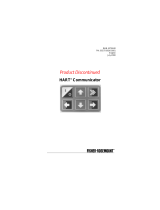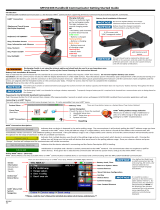
Contents
Chapter 1 Introduction.................................................................................................................. 5
1.1 Using this Manual............................................................................................................................. 5
1.2 Transmitter overview....................................................................................................................... 5
1.3 Product recycling/disposal................................................................................................................7
Chapter 2 Installation.....................................................................................................................9
2.1 Safety messages...............................................................................................................................9
2.2 Confirm HART revision capability......................................................................................................9
2.3 Switch HART revision mode............................................................................................................10
2.4 Considerations............................................................................................................................... 10
2.5 Mounting....................................................................................................................................... 12
2.6 Installing the transmitter................................................................................................................13
2.7 Multichannel installations...............................................................................................................17
2.8 Set the switches............................................................................................................................. 18
2.9 Wiring............................................................................................................................................ 19
2.10 Power supply................................................................................................................................23
Chapter 3 Configuration...............................................................................................................27
3.1 Safety messages.............................................................................................................................27
3.2 Commissioning.............................................................................................................................. 27
3.3 AMS Device Manager......................................................................................................................28
3.4 Field Communicator.......................................................................................................................29
3.5 Multidrop communication..............................................................................................................40
3.6 Rosemount 248 Configuration Interface specifications.................................................................. 41
Chapter 4 Operation and maintenance.........................................................................................43
4.1 Safety messages.............................................................................................................................43
4.2 Calibration......................................................................................................................................43
4.3 Transmitter-Sensor Natching......................................................................................................... 45
4.4 Switching HART Revision................................................................................................................ 47
4.5 Hardware Maintenance.................................................................................................................. 48
4.6 Diagnostic messages......................................................................................................................48
Chapter 5 Safety Instrumented Systems (SIS) requirements......................................................... 53
5.1 SIS certification...............................................................................................................................53
5.2 Identify safety certification............................................................................................................. 53
5.3 Installation..................................................................................................................................... 53
5.4 Configuration................................................................................................................................. 54
5.5 Operation and maintenance...........................................................................................................54
5.6 Specifications................................................................................................................................. 56
Contents
00809-0100-4825 December 2019
Rosemount 248 iii





















